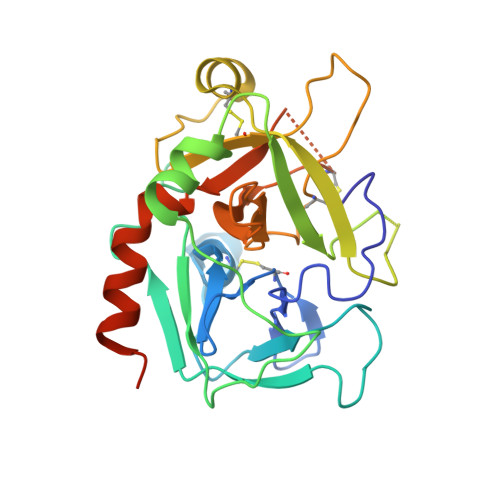Residues W215, E217 and E192 control the allosteric E*-E equilibrium of thrombin.
Pelc, L.A., Koester, S.K., Chen, Z., Gistover, N.E., Di Cera, E.(2019) Sci Rep 9: 12304-12304
- PubMed: 31444378
- DOI: https://doi.org/10.1038/s41598-019-48839-1
- Primary Citation of Related Structures:
6P9U, 6PX5 - PubMed Abstract:
A pre-existing, allosteric equilibrium between closed (E*) and open (E) conformations of the active site influences the level of activity in the trypsin fold and defines ligand binding according to the mechanism of conformational selection. Using the clotting protease thrombin as a model system, we investigate the molecular determinants of the E*-E equilibrium through rapid kinetics and X-ray structural biology. The equilibrium is controlled by three residues positioned around the active site. W215 on the 215-217 segment defining the west wall of the active site controls the rate of transition from E to E* through hydrophobic interaction with F227. E192 on the opposite 190-193 segment defining the east wall of the active site controls the rate of transition from E* to E through electrostatic repulsion of E217. The side chain of E217 acts as a lever that moves the entire 215-217 segment in the E*-E equilibrium. Removal of this side chain converts binding to the active site to a simple lock-and-key mechanism and freezes the conformation in a state intermediate between E* and E. These findings reveal a simple framework to understand the molecular basis of a key allosteric property of the trypsin fold.
- Edward A. Doisy Department of Biochemistry and Molecular Biology, Saint Louis University School of Medicine, St. Louis, MO, 63104, USA.
Organizational Affiliation:



















